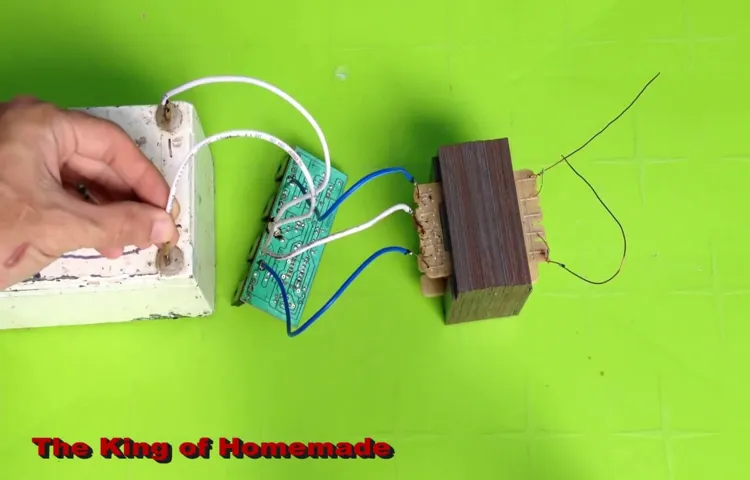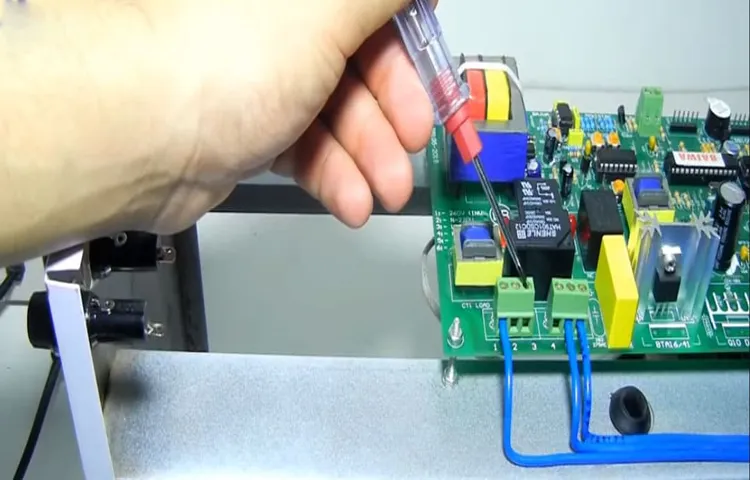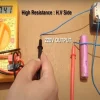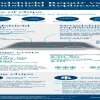Hey there! Curious about power inverters? Well, you’ve come to the right place! In today’s blog post, we’re going to dive into the world of power inverters and unravel what they’re all about. So, what exactly is a power inverter, you ask? Think of it as a handy device that converts direct current (DC) power from a battery or solar panel into alternating current (AC) power, which is what you typically use to power your appliances and devices at home or on the go. It’s like having a magical transformer that allows you to use your electronics wherever you are, even if there’s no traditional power outlet in sight.
But why would you need a power inverter in the first place? Well, picture this scenario: you’re out camping in the middle of nowhere, and you want to charge your phone or use your laptop. Without a power inverter, you’d be out of luck. However, with this versatile little device, you can tap into the power source of your car or a portable battery and voila! You have electricity at your fingertips.
Power inverters are also a fantastic option during power outages. Instead of being left in the dark or unable to use essential appliances, you can rely on a power inverter to keep things running smoothly. From powering lights and refrigerators to keeping your Wi-Fi router humming along, a power inverter can be a true lifesaver during those unpredictable moments.
Not only are power inverters incredibly useful, but they come in all shapes and sizes. Whether you’re looking for a compact and portable option for your outdoor adventures or a more robust inverter for your home backup needs, there’s something out there to meet every requirement. So buckle up and get ready to learn more about these incredible devices.
In our upcoming blog posts, we’ll explore various types of power inverters, highlight their benefits, and offer some tips for choosing the right one for your needs. Stay tuned for a power-packed journey into the world of power inverters!
Table of Contents
Understanding the Basics of Power Inverters
Have you ever wondered how to make a power inverter? Power inverters are devices that convert direct current (DC) electricity into alternating current (AC) electricity, allowing you to use AC-powered devices in places where only DC power is available, such as in a car or boat. While there are commercially available power inverters on the market, you can also make your own if you have a good understanding of electronics and basic circuitry. Building a power inverter from scratch requires a few key components, including a transformer, transistors, diodes, and capacitors.
These components work together to convert the DC power input into AC power output. It’s important to consider the power requirements of the devices you plan to use with the inverter, as well as the maximum power output of your homemade inverter. Building a power inverter can be a fun and educational project for electronics enthusiasts.
Definition and Functionality
power inverters. Power inverters are devices that convert direct current (DC) electricity into alternating current (AC) electricity. They are commonly used in situations where AC power is not readily available, such as when camping or traveling in a vehicle.
Understanding the basics of power inverters is essential for anyone who relies on portable power sources. Power inverters work by utilizing electronic components to change the voltage and frequency of the input DC power. This transformation allows the DC power to be used with AC-powered devices, such as laptops, home appliances, and power tools.
Power inverters come in a range of sizes and power capacities to accommodate different energy needs. They typically have input and output connections, as well as various built-in safety features to protect against overloading or short-circuiting. Overall, power inverters provide a convenient and efficient way to convert DC power into usable AC power, making them essential for a wide range of applications.

Types of Power Inverters
power inverters. In this section, we will delve into the different types of power inverters. Power inverters are essential devices that convert DC power, such as the power from a battery, into AC power that can be used to run household appliances or charge electronic devices.
The two main types of power inverters are modified sine wave inverters and pure sine wave inverters. Modified sine wave inverters are the most common type and are suitable for most basic electronic devices. They provide a waveform that is a close approximation of a pure sine wave, but with some distortion.
This can cause issues with certain sensitive equipment, such as medical devices or high-end audio systems. However, for most applications, modified sine wave inverters are more than adequate. On the other hand, pure sine wave inverters provide a waveform that is virtually identical to the AC power supplied by the grid.
This makes them the preferred choice for running sensitive equipment. Pure sine wave inverters are more expensive than modified sine wave inverters but offer better performance and compatibility with a wider range of devices. It’s important to consider the power requirements of your devices before choosing an inverter.
Inverters come in different power capacities, ranging from small portable models that can power a few small devices to larger models capable of powering an entire RV or home. Additionally, it’s important to note that the power output of an inverter should be higher than the power requirements of the devices you intend to run to ensure stable operation. In conclusion, power inverters are versatile devices that convert DC power into AC power, allowing you to power and charge a variety of devices.
Understanding the different types of power inverters, such as modified sine wave inverters and pure sine wave inverters, is essential in choosing the right one for your needs. Consider the power requirements of your devices and the performance and compatibility of the inverter before making a purchase.
Applications of Power Inverters
Power inverters are devices that are used to convert DC (direct current) power to AC (alternating current) power. They are often used in situations where AC power is not readily available, such as when camping or during power outages. Power inverters can be found in a variety of applications, from powering appliances and electronics to running power tools.
By understanding the basics of power inverters, you can better understand how they work and how to use them effectively. Power inverters come in various sizes and capacities, allowing you to choose the right one for your specific needs. Whether you need to charge your phone, run a small refrigerator, or power a construction site, there is a power inverter available for you.
So the next time you find yourself in need of AC power where there is none available, consider using a power inverter to get the job done.
Components and Materials Needed for Building a Power Inverter
Power inverters are devices that convert direct current (DC) into alternating current (AC) power, allowing us to use electrical devices that require AC power in our homes or vehicles. If you’re interested in building a power inverter, you’ll need a few key components and materials. First and foremost, you’ll need a power converter, which can be purchased or salvaged from an old electronic device.
This is the heart of the power inverter and is responsible for converting the DC power to AC power. You’ll also need a transformer to step up or step down the voltage as needed. Additionally, you’ll need capacitors to store and release electrical energy, as well as diodes to control the flow of electricity.
Furthermore, you’ll require a heat sink to dissipate excess heat generated during the conversion process. Finally, you’ll need various wires, connectors, and a printed circuit board (PCB) to connect all the components together. Building a power inverter requires some technical knowledge and skills, so it’s important to do proper research and consult resources or experts in the field.
Power Inverter Circuitry
power inverter, components, materials
Transformers
power inverter, components and materials, building, transformers, convert, direct current (DC), alternating current (AC), energy source. Power inverters are devices that convert direct current (DC) from a power source, such as a battery or solar panel, into alternating current (AC), which can be used to power various devices. To build a power inverter, you will need several components and materials.
One of the key components is a transformer, which is responsible for stepping up or stepping down the voltage of the input power. Transformers are made up of primary and secondary coils, which are wrapped around a ferromagnetic core. The primary coil is connected to the power source, while the secondary coil is connected to the load.
Other essential components include diodes, capacitors, and transistors, which are used to control the flow of current and ensure the smooth operation of the inverter. Additionally, you will need a printed circuit board (PCB) to mount and connect all the components together. The PCB acts as the backbone of the inverter, providing electrical connections and support.
Lastly, you will need various materials such as wires, heat sinks, and enclosure to ensure the safety and durability of the inverter. Building a power inverter requires careful selection and integration of these components and materials to ensure optimal performance and efficiency.
Diodes and Capacitors
power inverter, diodes, capacitors, components, materials
Battery and Battery Charger
building a power inverter
Step-by-step Guide to Building a Power Inverter
Today, I’m going to walk you through a step-by-step guide on how to make your own power inverter. A power inverter is a device that converts direct current (DC) into alternating current (AC), allowing you to use AC-powered devices from a DC power source, such as a battery or a solar panel. Building your own power inverter can be a fun and rewarding project, especially if you enjoy tinkering with electronics.
Plus, it can also come in handy during power outages or when you’re off the grid. So, let’s jump right in and learn how to make a power inverter from scratch. Before we start, you will need a few essential components: a transformer, an oscillator circuit, a filtering circuit, and a power source (such as a battery).
The transformer is responsible for converting the voltage, while the oscillator circuit generates the AC signal. The filtering circuit helps smooth out the AC signal and remove any unwanted noise. Once you have gathered all the necessary components, it’s time to build the circuit.
First, connect the oscillator circuit to the primary winding of the transformer. The oscillator circuit will produce the AC signal that will be fed into the transformer. Next, connect the secondary winding of the transformer to the filtering circuit.
The filtering circuit will smooth out the AC signal and remove any noise or unwanted harmonics. Finally, connect the filtering circuit to the power source, and you’re done! Once you have built the power inverter circuit, it’s important to test it before using it. Connect an AC-powered device to the output of the power inverter and turn it on.
If everything is working correctly, you should be able to power your device using the DC power source. However, if you encounter any issues, double-check your connections and make sure all components are properly connected. Building a power inverter from scratch can be challenging, especially if you’re new to electronics.
Designing the Circuit Diagram
building a power inverter
Soldering and Assembling the Components
soldering iron, power inverter
Testing and Troubleshooting
power inverter, testing, troubleshooting
Sealing and Securing the Inverter
power inverter, sealing and securing the inverter. When building a power inverter, one crucial step you must not overlook is sealing and securing the inverter. This helps to protect the sensitive internal components and ensure the longevity and performance of your device.
So, how exactly do you go about sealing and securing the inverter? Well, let’s break it down step by step. Firstly, make sure you have a suitable enclosure for your inverter. This could be a plastic or metal box, depending on your preference and the level of protection you require.
Ensure that the enclosure has enough space to accommodate the inverter and any additional components like fuses or capacitors. Next, carefully place the inverter inside the enclosure, making sure it is positioned securely. You can use screws or brackets to secure it in place.
Be cautious not to overtighten the screws as this could damage the inverter. Once the inverter is securely in place, it’s time to seal any openings or gaps in the enclosure. This is important to prevent dust, moisture, or any other unwanted particles from entering the inverter.
You can use silicone sealant or gaskets to seal the gaps around the edges of the enclosure and any holes for wiring or ventilation. After sealing the enclosure, check for any loose wires or connections. Make sure all the wires are properly connected and that there are no loose or exposed conductors.
This will minimize the risk of short circuits or electrical hazards. Additionally, you may want to consider adding a removable inspection panel to your enclosure. This will allow you to easily access the internal components for maintenance or troubleshooting without having to fully dismantle the enclosure.
Safety Precautions to Consider
If you’re interested in learning how to make a power inverter, it’s important to keep safety precautions in mind. Working with electrical components can be dangerous if proper safety measures are not taken. First and foremost, make sure to wear protective gear such as gloves and safety goggles to protect yourself from any potential accidents.
Additionally, it’s crucial to work in a well-ventilated area to avoid any inhalation of fumes or gases that may be produced during the manufacturing process. Double-check all connections and ensure that they are secure to prevent any potential electrical shocks. It’s also important to follow a step-by-step guide or seek expert advice when building a power inverter to minimize the risks and ensure the final product functions correctly.
By prioritizing safety and taking necessary precautions, you can safely create your own power inverter.
Working with High Voltage
Working with high voltage can be extremely dangerous if proper safety precautions are not followed. Whether you’re an electrician, engineer, or simply working with high voltage equipment, there are a few key safety measures to consider. First and foremost, always ensure that you have been adequately trained and are properly licensed to work with high voltage.
This will give you the knowledge and skills necessary to handle potentially hazardous situations safely. Additionally, it is crucial to wear the appropriate personal protective equipment (PPE) such as insulated gloves, goggles, and flame-resistant clothing. These will provide an extra layer of protection in case of an accident or electrical arc.
Additionally, it is essential to never work alone when dealing with high voltage. Having a coworker or colleague present can help ensure that any potential hazards are identified and addressed promptly. Finally, always follow the manufacturer’s guidelines and instructions for any high voltage equipment you are using.
This includes proper maintenance and inspection procedures to avoid any unforeseen issues. By following these safety precautions, you can help minimize the risks associated with working with high voltage and ensure a safe working environment.
Proper Ventilation and Heat Dissipation
Proper ventilation and heat dissipation are crucial when it comes to ensuring the safety of your home or workplace. Without adequate airflow and heat management, there is a risk of overheating, which can lead to various hazards such as fire or equipment failure. Therefore, it is essential to take certain precautions to maintain a safe environment.
One important step is to properly install and maintain ventilation systems, such as fans or air conditioners, to ensure proper airflow and circulation. Additionally, you should regularly inspect and clean these systems to prevent any blockages or malfunctions. Another important consideration is the placement of heat-generating appliances or equipment.
It is crucial to ensure that they are located in areas with proper ventilation and sufficient space for heat dissipation. Adequate spacing and clearance around these appliances help in preventing heat buildup and reducing the risk of fire or damage. Furthermore, it is crucial to avoid overcrowding or blocking air vents or ducts, as this can impede the proper airflow and lead to inadequate heat dissipation.
Regularly checking and maintaining these ventilation and heat dissipation measures will go a long way in ensuring the safety and well-being of your home or workplace. So, make sure to prioritize proper ventilation and heat dissipation to prevent any potential hazards and maintain a safe environment for everyone.
Protection against Overload and Short Circuit
Protection against overload and short circuit is crucial to ensure the safety of electrical systems. Overload occurs when the electrical load on a circuit exceeds its rated capacity, while a short circuit happens when there is a direct connection between the live and neutral wires. Both situations can lead to overheating, fires, and damage to the equipment.
To prevent overload and short circuit, there are several safety precautions that should be considered. Firstly, it is important to have circuit breakers or fuses installed in the electrical panel. These devices detect excessive current flow and trip the circuit, cutting off the power supply to prevent damage.
Secondly, it is essential to ensure that the electrical wiring and connections are in good condition. Damaged or frayed wires can increase the risk of short circuits. Regular maintenance and inspections by a qualified electrician are recommended.
Lastly, distributing the electrical load evenly across circuits and avoiding excessive use of extension cords can help prevent overload. By being aware of these safety precautions and taking necessary steps, we can ensure the protection of our electrical systems from overload and short circuit hazards.
Usage and Storage Guidelines
Safety precautions are essential when it comes to using and storing various items in our everyday lives. This is no different when it comes to using and storing different products or materials. It’s important to follow guidelines and take necessary precautions to avoid any accidents or harm.
For example, if you have chemicals or cleaning products at home, it’s crucial to store them in a safe and secure place away from children and pets. Additionally, it’s important to follow the instructions provided on the labels, such as wearing protective gloves or eyewear when using certain products. When it comes to storing items, it’s important to consider factors like temperature and humidity, as some products may have specific storage requirements.
By following these safety precautions, we can ensure a safe and accident-free environment for ourselves and those around us.
Conclusion and Additional Resources
And there you have it, the secret to making your very own power inverter! Now you can harness the power of electricity and wield it like a wizard. Just remember, with great power comes great responsibility. So whether you’re looking to power your gadgets on-the-go or simply impress your friends with your electrifying skills, this DIY project will surely make you the talk of the town.
So go forth, my fellow inverter enthusiasts, and bring light to the darkness with the flick of a switch. After all, who needs a superhero when you can be your own power inverter champion?”
FAQs
What is a power inverter and how does it work?
A power inverter is a device that converts DC (direct current) power from a battery into AC (alternating current) power that can be used to run household appliances. It works by using electronic circuitry to change the flow of electricity.
What are the benefits of using a power inverter?
Using a power inverter allows you to power your electronic devices and appliances when you don’t have access to a traditional power source, such as when camping or during a power outage. It also allows you to use appliances that are designed for AC power in vehicles or off-grid locations.
How do I choose the right power inverter for my needs?
When choosing a power inverter, consider the wattage requirements of the devices you want to power, as well as the surge capacity and efficiency of the inverter. Also, consider whether you need a modified sine wave or pure sine wave inverter, depending on the types of devices you’ll be using.
Can a power inverter drain my vehicle’s battery?
Yes, if you run your vehicle’s engine without it charging the battery, using a power inverter for an extended period of time can drain the battery. It is important to monitor your battery voltage and make sure to run the vehicle periodically to recharge the battery.
Can I use a power inverter with solar panels?
Yes, you can use a power inverter with solar panels to convert the DC power generated by the panels into AC power that can be used to power your appliances or feed back into the electrical grid.
Are power inverters safe to use?
Power inverters can be safe to use if proper precautions are taken. It is important to use the correct gauge of cables, ensure proper ventilation, and follow the manufacturer’s instructions. It is also advisable to use a power inverter with built-in safety features, such as overload protection and short circuit protection.
Can I connect multiple devices to a power inverter at the same time?
Yes, you can connect multiple devices to a power inverter as long as the total wattage of the devices does not exceed the inverter’s rated capacity. It is important to distribute the load evenly and not overload the inverter to prevent overheating or damage.



